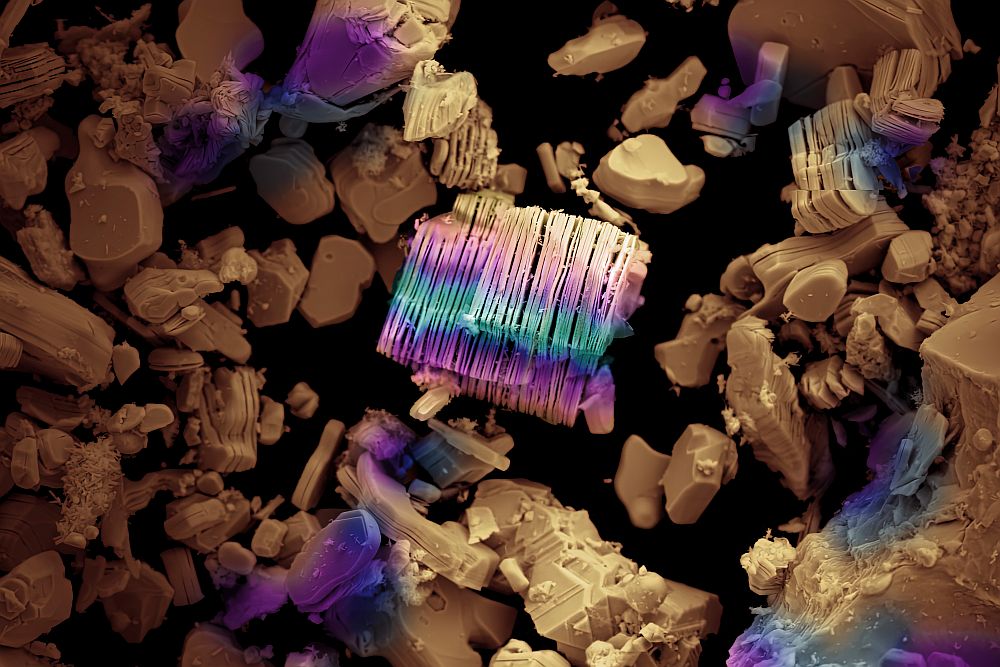If Michael Phelps or Ryan Lochte could reduce the drag of their bodies against the water in the pool by an order of magnitude, they would, right? What if they could reduce drag by two orders of magnitude? That would get some attention, for sure. Their options for doing so, however, are limited to high-tech swim trunks, shaving and muscles. There is nothing they can do about the medium through which they travel.
Light, like star Olympic swimmers, encounters resistance as it propagates down an optical fiber, but unlike water, the medium can be modified to reduce resistance and the effects that cause it.
Easy to say, not so easy to do.
But that is exactly what a Clemson-based group has done. John Ballato, FACerS, and his group published a new paper in Nature Photonics demonstrating alumina-rich optical fiber compositions with properties that allow more and better propagation of light. Specifically, the Brillouin scattering properties in this glass are vastly improved, and the group reports making a fiber with 54 mol% alumina with a Brillouin gain coefficient of almost 100 times less that that of commercial fiber.
Brillouin scattering is “a nonlinear scattering effect involving acoustic phonons.” RP Physics website explains, “An incident photon can be converted into a scattered photon of slightly lower energy, usually propagating in the backward direction, and a phonon.” Ballato translates into lay terms in a press release, “At high power, the light causes the atoms of the material to vibrate more violently and those vibrations convert some of the light energy into sound energy which restricts the ability of the fiber to carry more power.” Bottom line—the amount of light (read: information) that can travel through the fiber reaches a limit.
Alumina offers a number of attractive optical properties. For example, it dissolves rare earth dopants into silicate glass hosts, which avoids the problem of dopant clustering that can lead to quenching. Importantly, at high concentrations, the paper says alumina’s “high density, low photoelastic constant, high acoustic velocity and large Brillouin spectral width … cooperate at high concentrations to impart a much more massive reduction in the Brillouin gain that has been demonstrated to date.”
The problem is that high-alumina fibers are challenging to make, especially by conventional optical fiber manufacturing techniques, so their advantages have been left untapped. High-alumina compositions crystallize easily and working temperatures are very high, well over 2,000°C.
The group succeeded by using a single-crystal sapphire rod inserted into a silica cladding sleeve. The draw temperature was 2,100°C, well above sapphire’s melting point of 2,050°C, which allowed for fibers to be drawn in a “molten core” approach.
In an interview published with the article, Ballato and his coauthor, Peter Dragic, explain, “If the cooling rate is fast enough, the core melt solidifies into an amorphous phase, as it does in our high-alumina-content all-glass core. Our work is different because we used a sufficiently thick [silica] cladding tube to force a higher draw temperature-high enough to melt sapphire and thus permit its use for making a high-alumina-content all-glass fiber.”
The molten core approach allowed the group to draw binary aluminosilicate glass fibers with high alumina contents. About 450 meter of fiber were drawn, although the fiber diameter proved difficult to control and ranged between ~ 125 to 170 micrometers (against a target diameter of 150 micrometers). The diameter fluctuation, however, gave the group a built-in opportunity to test composition variations (which are directly related to fiber diameter) and, therefore, to conduct Brillouin scattering tests for a range of alumina concentrations.
Ballato said in a phone interview that the fiber is a multimode geometry and has a core size of about 30 micrometers (with some variation). The core is a binary aluminosilicate composition incorporating up to 55 mol% alumina. Ballato explained, “The [sapphire] core is molten when the fiber is being drawn, and like any melt, it attacks whatever it comes into contact with, similar to the way a molten glass will attack the crucible containing it.” He also noted that the Al2O3-SiO2 phase diagram has a large immiscibilty range and that phase separation is common in the composition ranges of these fibers. However, he says, “In this case, even though the quench rates are not all that extreme, they are high enough and the fiber is small enough that a glassy state is preserved.”
While the goal of the work was to prove the concept of fabricating molten core, high-alumina optical fibers with superior properties, the group has kept an eye on the practical. Ballato says the drawing rig the group used is lab-scale, but says the sapphire composition is “commercially worthy and amenable to manufacturing processes or higher production rates.”
Besides achieving the primary goal of reducing the Brillouin gain coefficient, the group discovered that the contributions to the photoelastic effect by alumina (negative) and silica (positive) balance to approach a net-zero value, which also drives the Brillouin gain coefficient toward zero. “This is an amazing condition, especially given that it requires a balancing act between materials, much like that accomplished with zero-stress and zero-thermo-optic-coefficient glasses,” the authors say in the interview.
Alumina accrues one other benefit of note, “…its acoustic velocity decreases with increasing temperature. This allowed us to demonstrate another compositionally tuned fiber: one in which the Brillouin scattering frequency is independent of temperature (that is, a Brillouin athermal fiber).” Independence from temperature effects opens applications for sensing applications, for example, as strain sensors.
While the goal of this work was to overcome the deleterious effects of Brillouin scattering with high-alumina silicate glass compositions, the authors note in their conclusion that the molten core fiber drawing technique “affords a convenient and direct approach to compositional tailoring of simple core/clad optical fiber,” which they expect will open the door to new applications in the future.
The paper is “Sapphire-derived all-glass optical fibres,” by P. Dragic, T. Hawkins, P. Foy, S. Morris and J. Ballato. (DOI: doi:10.1038/nphoton.2012.182) Published online Aug. 12, 2012 (subscription or purchase required).
Author
Eileen De Guire
CTT Categories
- Basic Science
- Glass
- Optics


